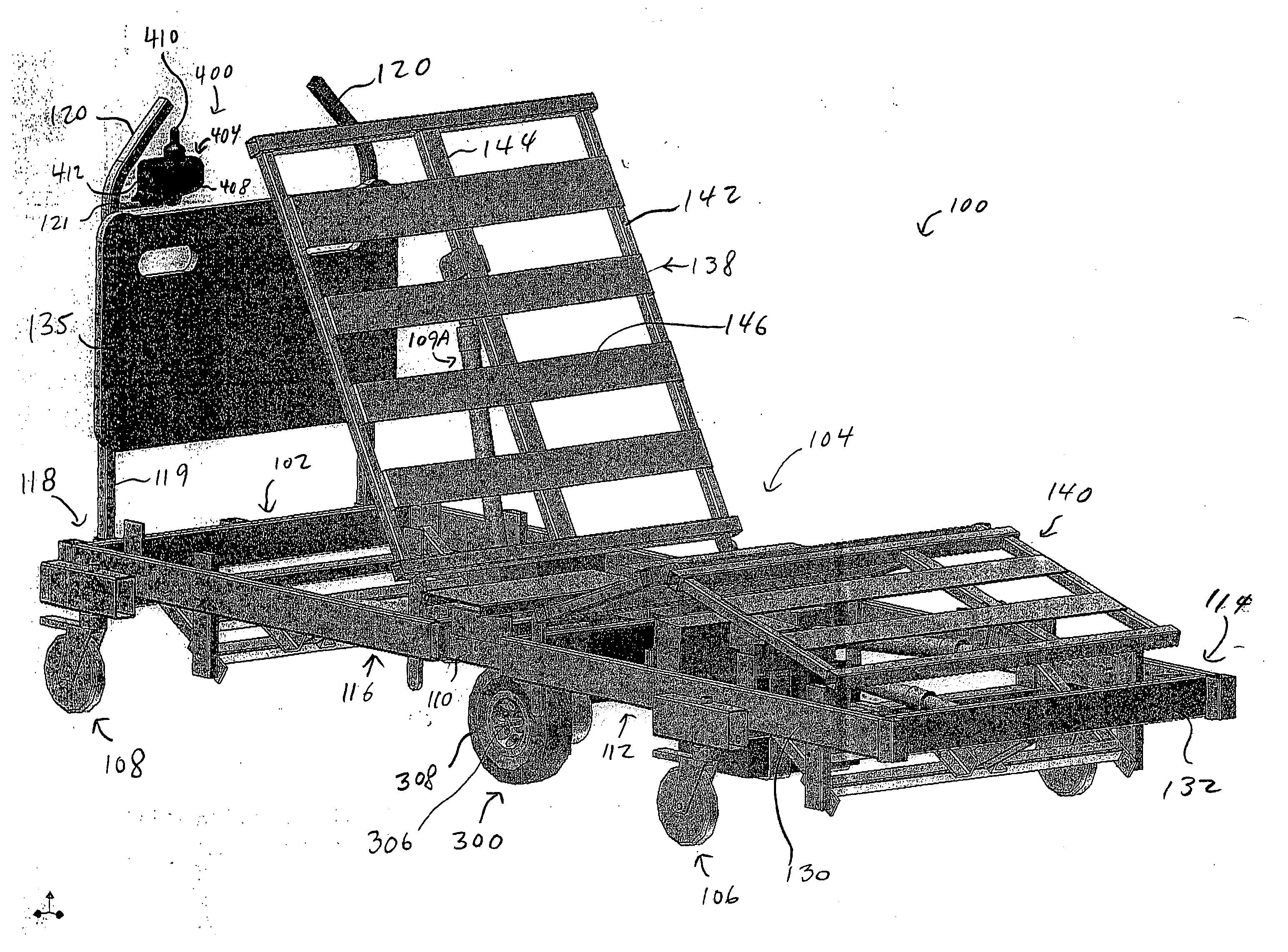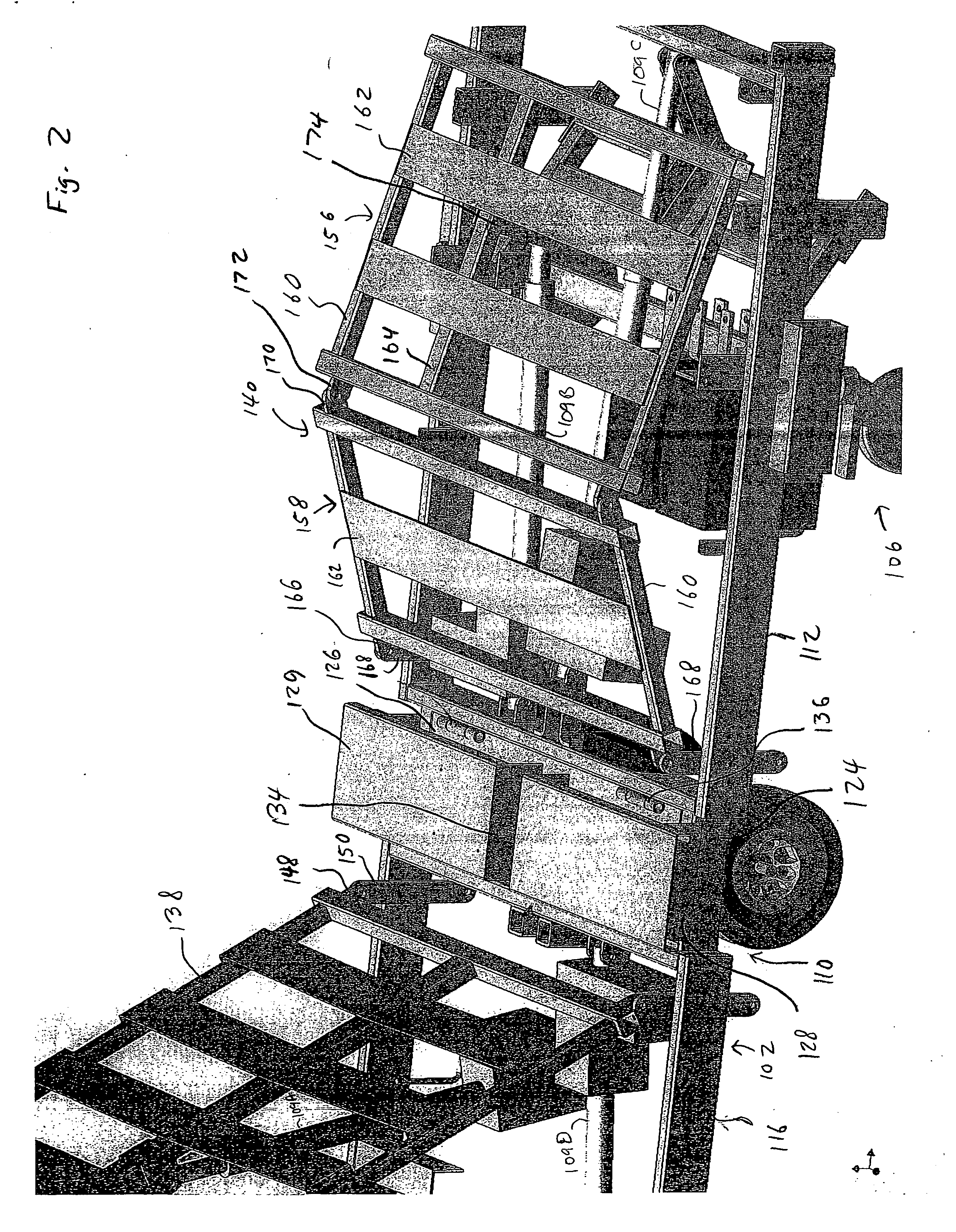Bariatric transport with improved maneuverability
a technology of maneuverability and bariatric patients, applied in the field of health care industry, can solve the problems of difficult physical lifting and positioning of bariatric patients by health care providers or workers, poor blood circulation, and many health problems of bariatric patients, and achieve the effect of increasing maneuverability
- Summary
- Abstract
- Description
- Claims
- Application Information
AI Technical Summary
Benefits of technology
Problems solved by technology
Method used
Image
Examples
Embodiment Construction
[0024] Referring now to the drawings in greater detail, and initially to FIG. 1, one embodiment of a moveable bariatric bed transport for accommodating an obese person is represented by the reference numeral 100. The transport 100 includes generally a base frame 102, a patient support assembly 104 mounted onto the base frame 102, a drive assembly 300 having a pair of drive wheels 308 for propelling the transport 100 in a variety of movement patterns, and a control system 400 directing operation of the drive assembly 300 according to user selections. Preferably, a pair of leading stabilizing wheels 106 and trailing stabilizing wheels 108 provide support and balance the transport 100 on an underlying surface (e.g., a floor) when the drive assembly is in operation and serve as the means to allow movement of the transport 100 across the underlying surface manually when the drive wheels 308 are not engaging the surface. A number of actuators 109 mounted on the base frame 102 perform the ...
PUM
 Login to View More
Login to View More Abstract
Description
Claims
Application Information
 Login to View More
Login to View More - R&D
- Intellectual Property
- Life Sciences
- Materials
- Tech Scout
- Unparalleled Data Quality
- Higher Quality Content
- 60% Fewer Hallucinations
Browse by: Latest US Patents, China's latest patents, Technical Efficacy Thesaurus, Application Domain, Technology Topic, Popular Technical Reports.
© 2025 PatSnap. All rights reserved.Legal|Privacy policy|Modern Slavery Act Transparency Statement|Sitemap|About US| Contact US: help@patsnap.com



